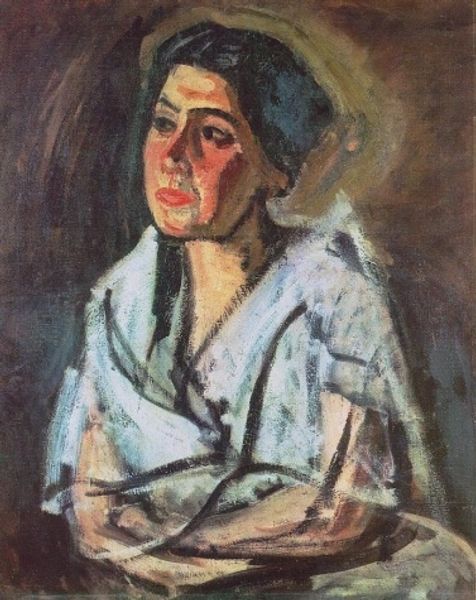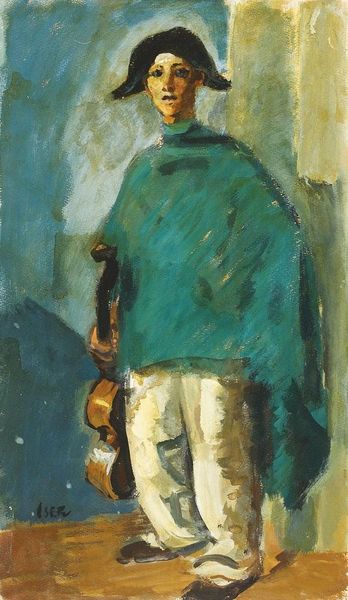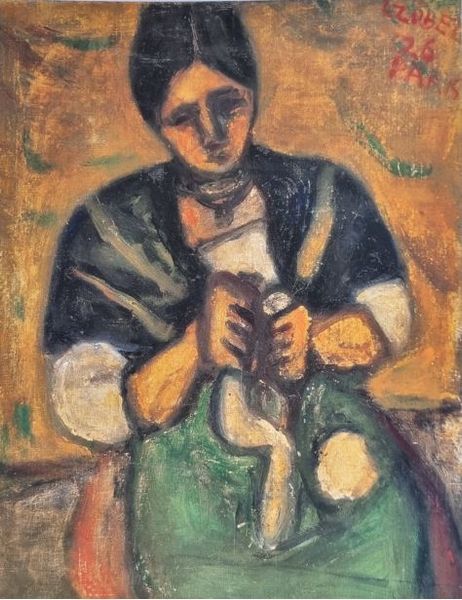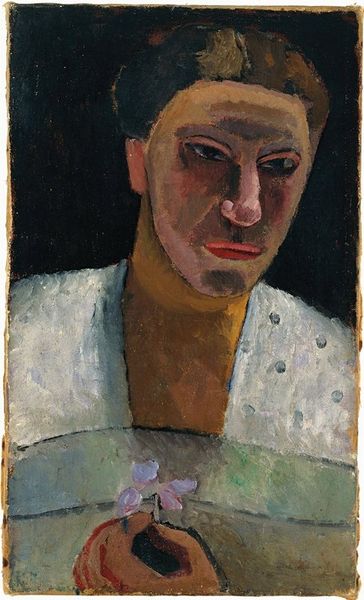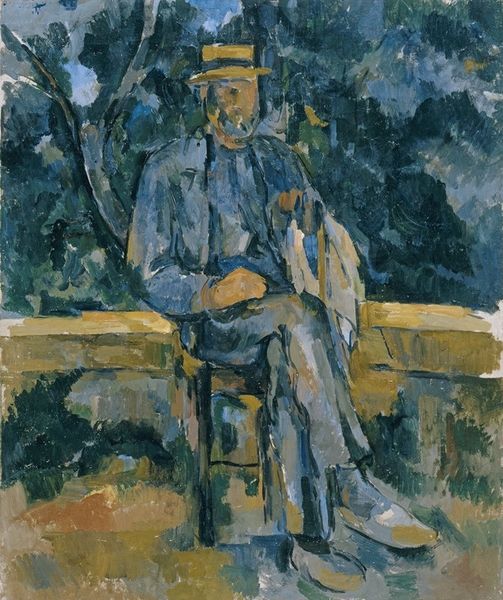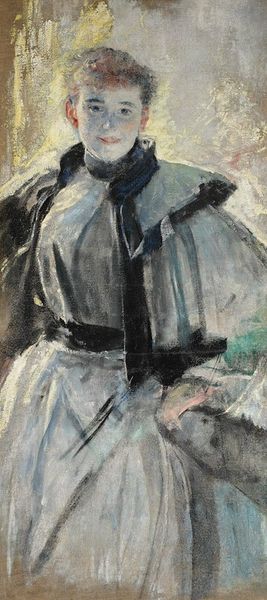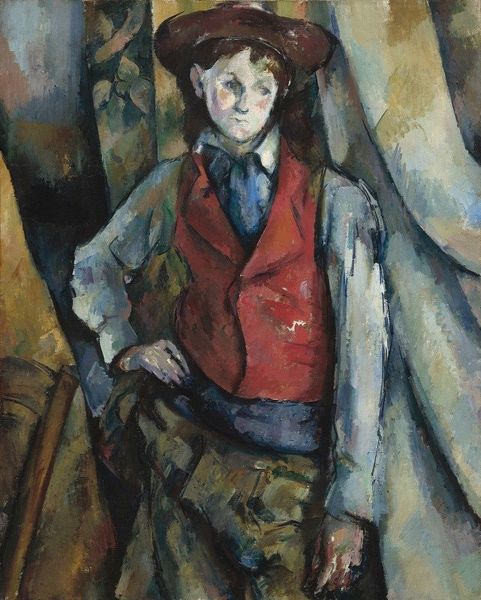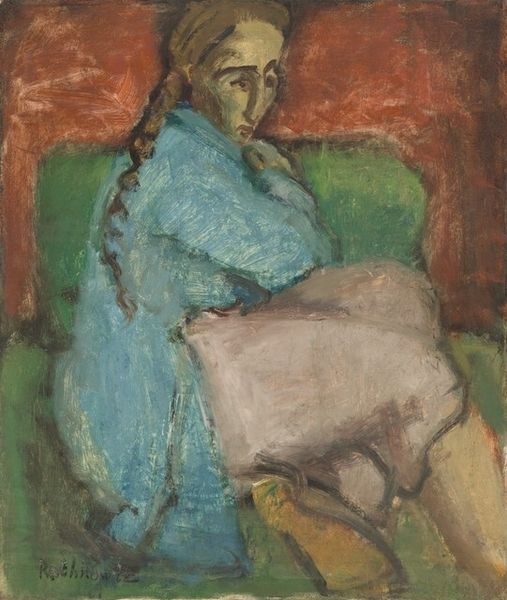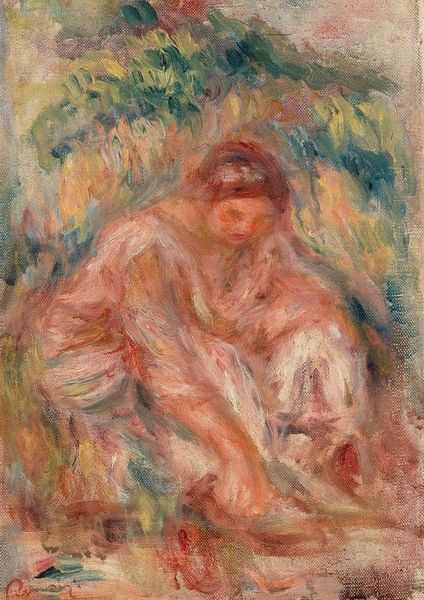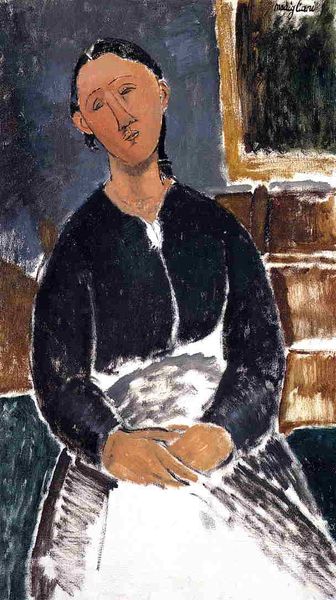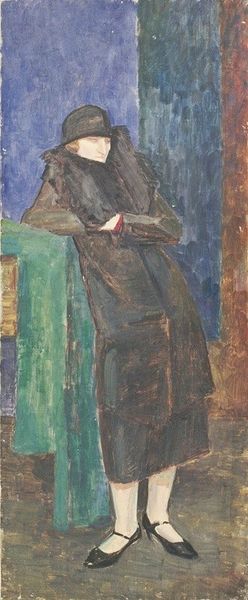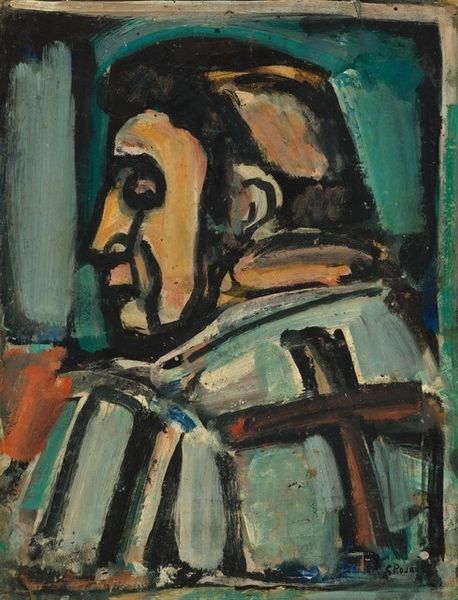
oil-paint
#
portrait
#
cubism
#
figurative
#
oil-paint
#
figuration
#
oil painting
#
expressionism
#
portrait art
#
modernism
Copyright: Public Domain: Artvee
Editor: So, this is "Portrait of a Man in a White Hat" by Tadeusz Makowski, painted in 1913 with oil. It’s got a kind of rough-hewn quality, very tactile. What do you make of the visible brushstrokes and fragmented forms? Curator: The materiality is central here. Look at the visible labor; the artist isn't trying to hide the act of making. Oil paint allows for layering and reworking. Do you think that fracturing aligns with broader industrial or social fragmentation of the period? Editor: I can see that, yes. There’s definitely a sense of unease conveyed by the broken forms. Does the hat function almost as a symbol, perhaps related to labour? Curator: Precisely! Consider the social context: hats often signified profession, class, or identity. But this white hat is simplified, perhaps suggesting a worker or farmer. Note also how it's rendered—less about accurate representation and more about raw material, the feel of straw or felt depicted through crude strokes. Editor: So, it’s less about portraying a specific person and more about conveying something about labor or a certain class? Curator: Exactly. How the artist works the medium – oil on canvas – becomes a crucial element, communicating something that mere photographic representation would fail to grasp. Think about the accessibility, or lack thereof, in obtaining these materials; who is this labor really for? Editor: I hadn't thought about the materials in that light. I was so focused on the composition. Curator: That’s natural! But remember to also think: who is producing this, for what purpose, and what is being depicted? That reveals layers of social dynamics. Editor: That definitely gives me a lot more to think about when looking at paintings from this period, especially regarding how “art” relates to craft or commodity. Curator: Absolutely, always follow the process of production and its inherent commentary; from there the social statement will reveal itself!
Comments
No comments
Be the first to comment and join the conversation on the ultimate creative platform.
